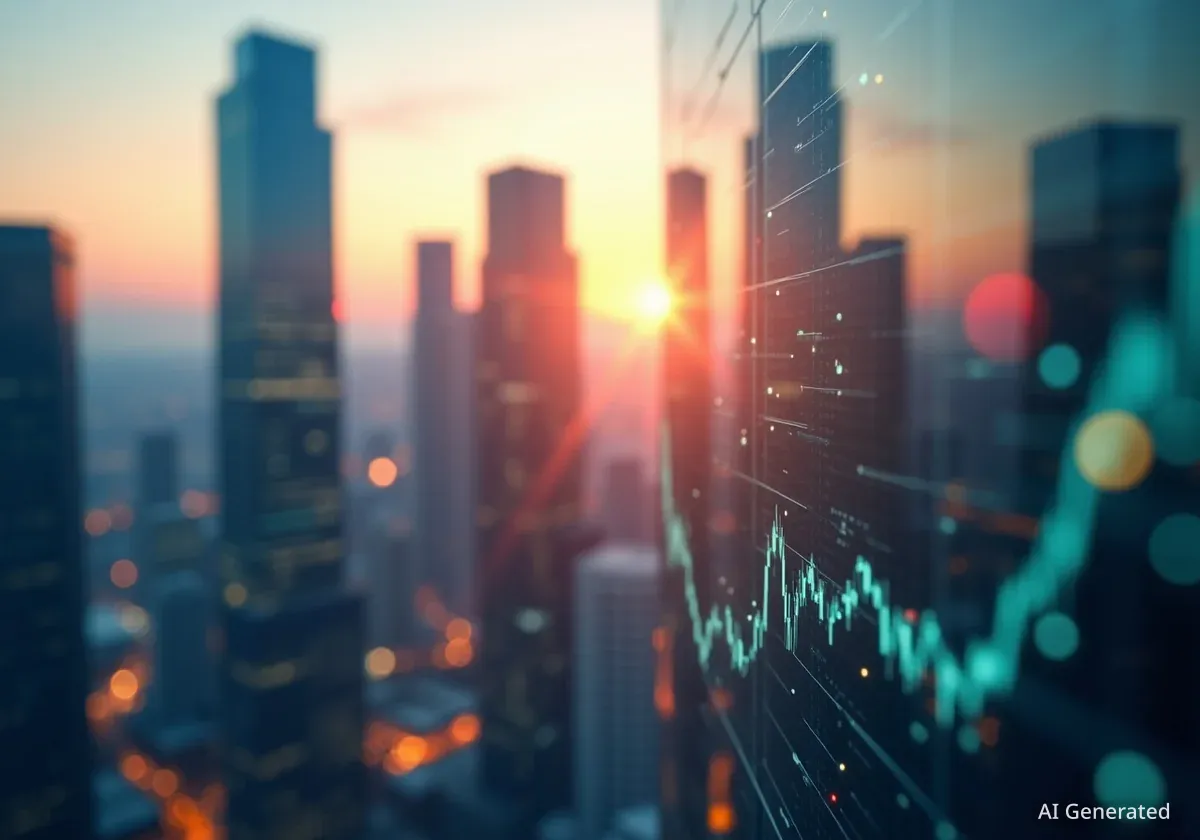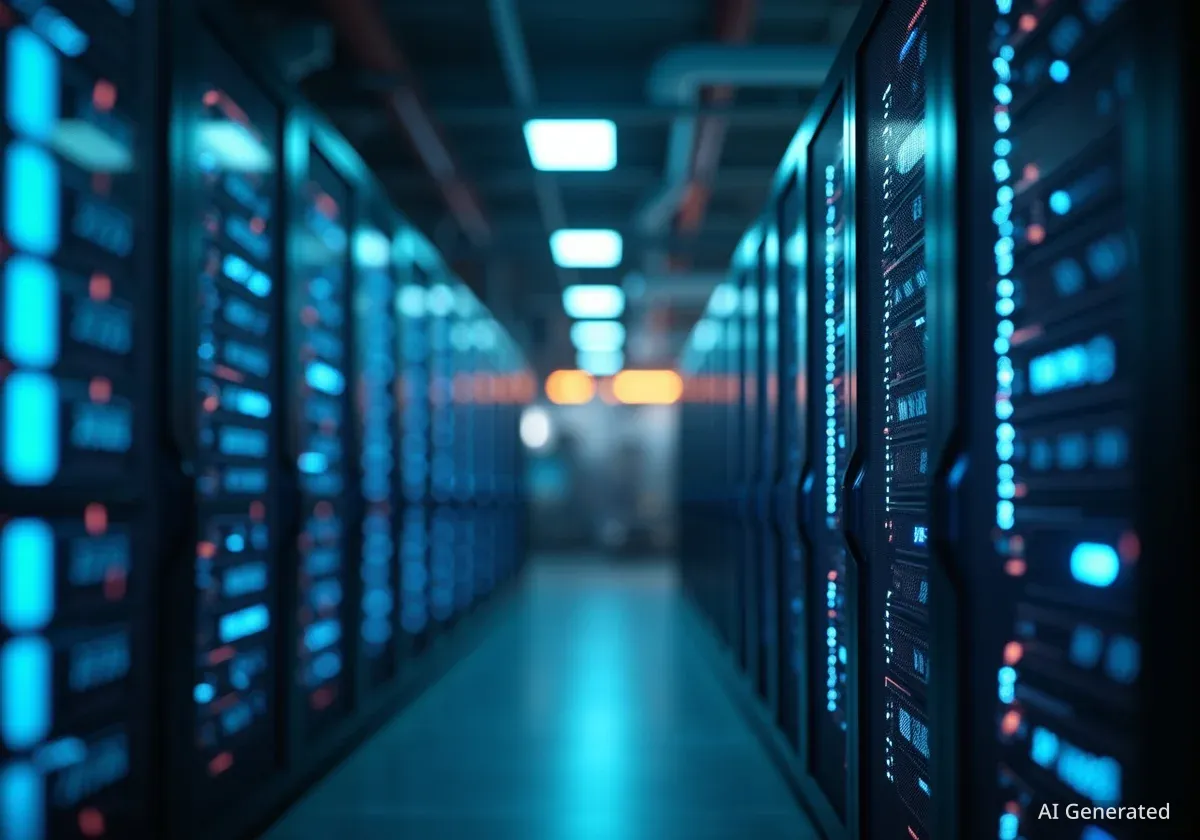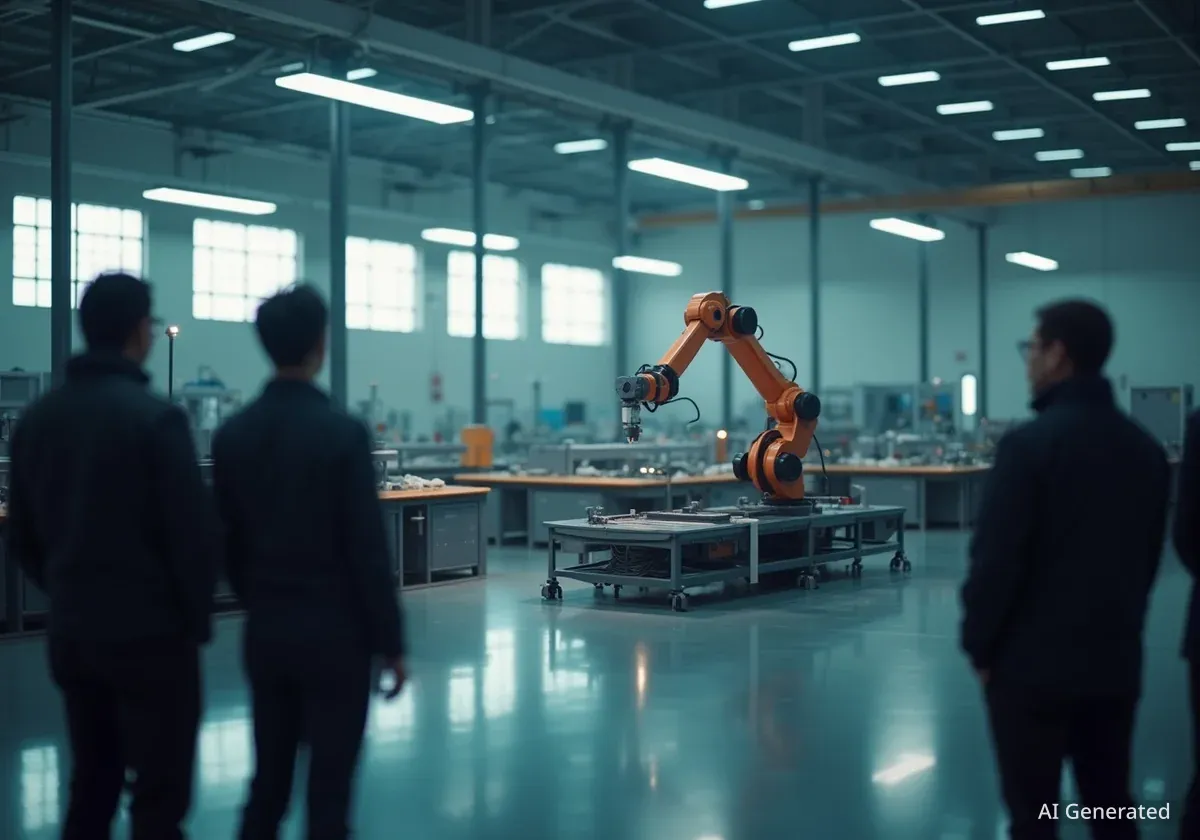The United States economy is presenting a complex picture, with robust stock market performance and headline growth figures masking a significant divergence. A booming artificial intelligence sector appears to be driving positive indicators, creating a separate economic track that operates largely independently of traditional industries, which face different pressures from ongoing policy decisions.
This division is becoming a central topic for economists, who observe that while major indices reach new highs, the benefits are not being distributed evenly across all sectors. The performance of AI-related companies is so strong that it may be obscuring underlying weaknesses or stagnation in other parts of the economy.
Key Takeaways
- The US economy is exhibiting a dual nature, with a thriving AI sector and a more challenged traditional economy.
- Major stock market indices have hit record highs over 30 times this year, largely fueled by AI-related stocks.
- Economists are analyzing the impact of policies like high tariffs and pressure on the Federal Reserve on the non-AI economy.
- Productivity gains and investment are heavily concentrated in technology, raising concerns about broader economic health.
The Great Economic Divide
Economic analysts are increasingly pointing to the emergence of two distinct economies within the United States. The first is a fast-growing, highly capitalized technology sector centered on artificial intelligence. This segment is characterized by massive investment, rapid innovation, and soaring stock valuations.
The second economy includes nearly everything else: manufacturing, retail, agriculture, and traditional services. While not in a state of collapse, these sectors are not experiencing the same explosive growth. Instead, they are more directly exposed to traditional economic headwinds, including inflation, interest rate sensitivity, and the effects of international trade policies.
Background on Recent Market Performance
Despite concerns over certain economic policies, such as the imposition of high tariff rates not seen in nearly a century, the broader stock market has shown remarkable resilience. After an initial sharp decline in April following the announcement of the "Liberation Day" tariffs, the market has rebounded significantly, achieving new record highs on more than 30 separate occasions this year. This recovery is largely attributed to the outsized performance of a handful of major AI and technology firms.
This division explains why mainstream economic warnings about risky policies don't always seem to align with headline market performance. The AI economy acts as a powerful engine, pulling the average indicators upward even as other areas may be struggling.
AI as an Economic Engine
The artificial intelligence sector's influence on the economy is difficult to overstate. Companies involved in developing AI models, manufacturing specialized semiconductors, or creating AI-powered software have seen their market capitalizations surge. This has a ripple effect on investment and employment within the tech ecosystem.
"We are witnessing a paradigm shift where a single technology vertical is powerful enough to influence macroeconomic data. The investment flowing into AI infrastructure and research and development is on a scale that creates its own gravitational pull, attracting talent and capital away from other sectors."
This concentration of resources is driving significant productivity gains, but only within a limited sphere. An AI software company might double its output with the same number of employees, boosting national productivity figures. However, a traditional manufacturing plant or a local retail business does not see a comparable benefit.
Investment Concentration
According to recent market analysis, over 60% of all new venture capital investment in the last fiscal year was directed toward AI-related startups. The top five publicly traded technology companies now account for nearly 25% of the S&P 500's total market value, a level of concentration not seen since the dot-com era.
The Productivity Paradox
One of the key questions for economists is why the incredible productivity gains seen in the AI sector are not translating more broadly across the economy. This phenomenon is sometimes referred to as a modern "productivity paradox."
Several factors are believed to be at play:
- High Cost of Adoption: Implementing advanced AI systems can be prohibitively expensive for small and medium-sized businesses in traditional sectors.
- Skills Gap: There is a significant shortage of workers with the skills needed to develop, implement, and manage AI technologies.
- Sector-Specific Applications: The most powerful AI advancements are currently focused on digital tasks, data analysis, and software development, with slower translation into physical industries like construction or agriculture.
Risks and Realities for the Traditional Economy
While the AI economy thrives, the "everything else" economy faces a more conventional set of challenges. Policies such as high tariffs can increase the cost of raw materials and imported goods for manufacturers, squeezing profit margins. For example, the "Liberation Day" tariffs caused significant disruption in supply chains for automotive and electronics companies.
Furthermore, attempts to influence the Federal Reserve's decisions on interest rates create uncertainty for businesses that rely on borrowing for capital expenditures. These traditional companies are highly sensitive to the cost of capital, and policy instability makes long-term planning difficult.
According to Natasha Sarin, a professor at Yale Law School and former Treasury Department official, the positive economic trends are happening in spite of these policies, not because of them. The strength of the AI sector is effectively masking the pressure felt by non-tech businesses.
The Impact of Policy Uncertainty
Economic policy uncertainty can deter investment and hiring in capital-intensive industries. When businesses cannot predict future trade rules or interest rate environments, they often delay major projects. This caution can lead to slower growth and wage stagnation in sectors outside of the technology boom, further widening the gap between the two economies.
This creates a precarious situation. An economy heavily reliant on a single sector for its growth is vulnerable. If the AI boom were to slow, or if a market correction were to occur in the tech sector, the underlying weaknesses in the broader economy could be exposed quickly and dramatically.
Looking Ahead at the Dual Economy
The long-term implications of this two-track economy are a subject of intense debate among policymakers and economists. The key challenge will be to foster a more inclusive pattern of growth, where the benefits of technological advancement are more widely distributed.
Potential strategies include public investment in digital infrastructure, workforce training programs to address the AI skills gap, and policies that encourage the adoption of new technologies in traditional industries. Without such measures, the economic divergence could continue to grow, leading to increased inequality and social friction.
For now, the story of the U.S. economy is a tale of two very different realities. One is a story of unprecedented technological progress and wealth creation, while the other is a more familiar narrative of navigating policy uncertainty and traditional market forces. The overall economic health of the nation will ultimately depend on bridging the gap between them.





